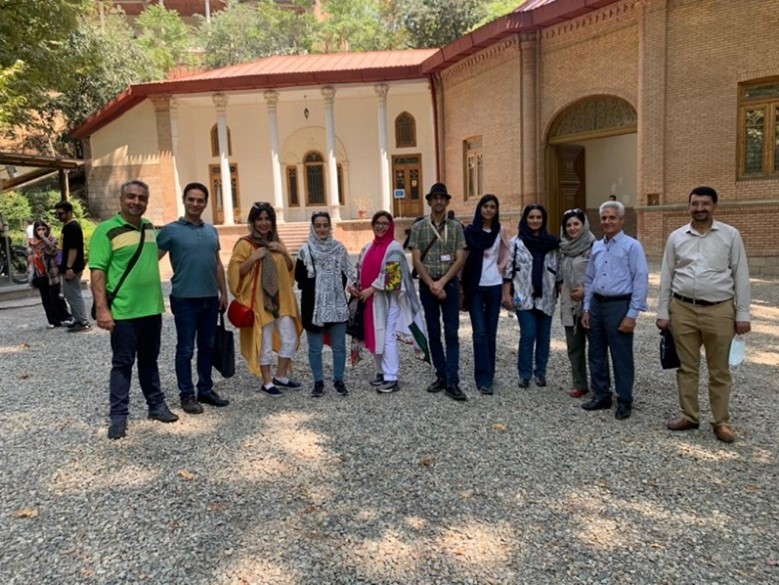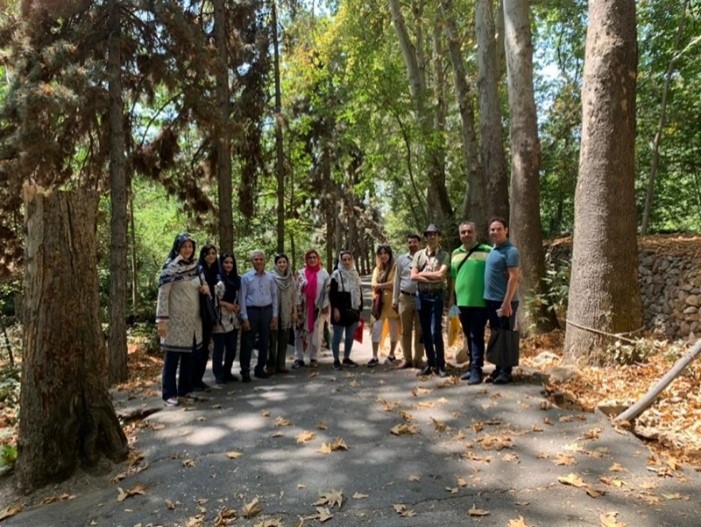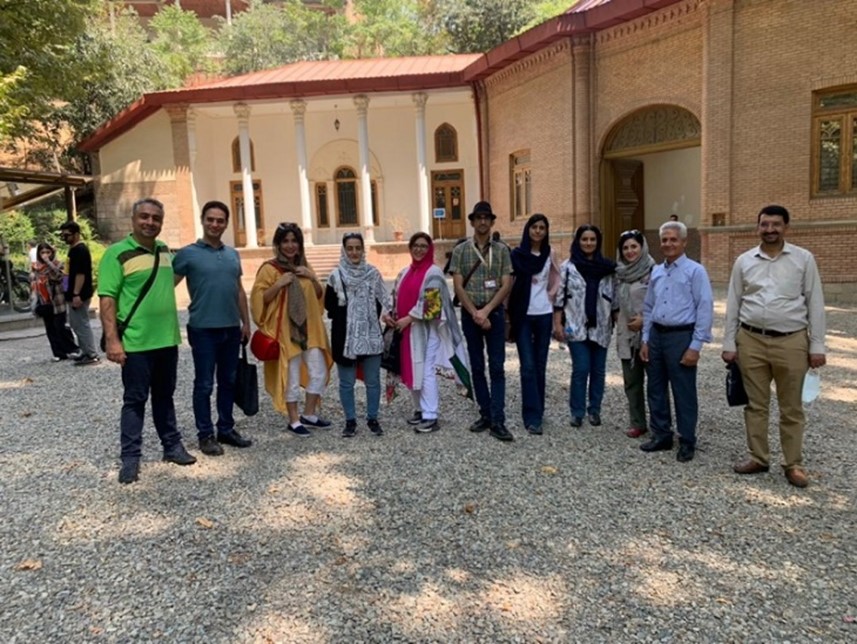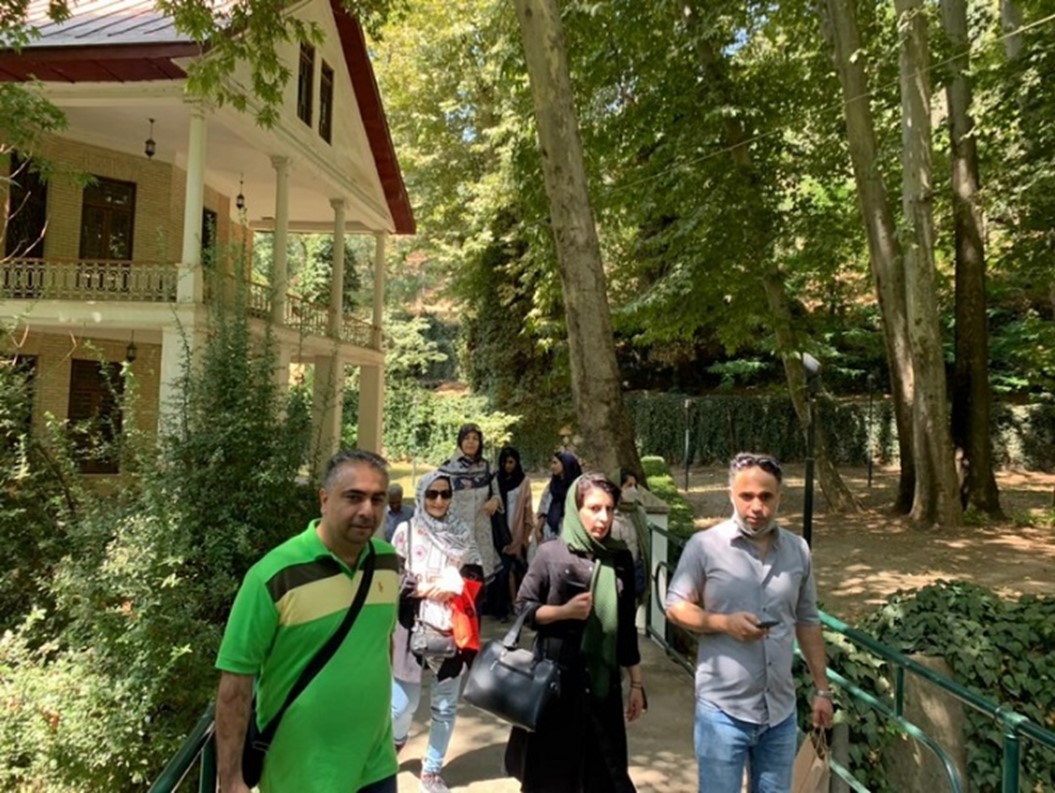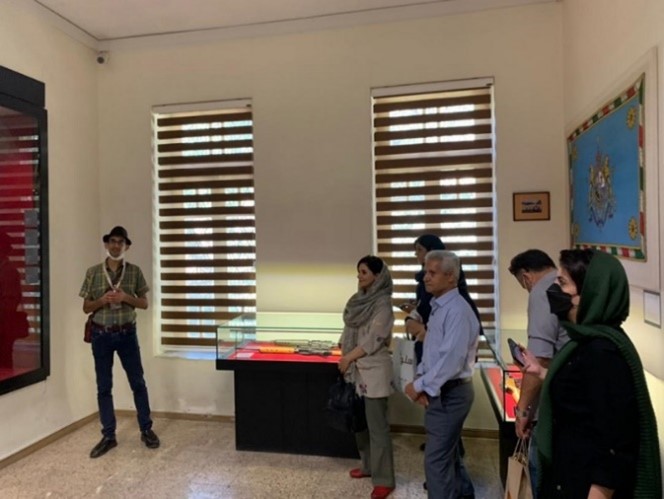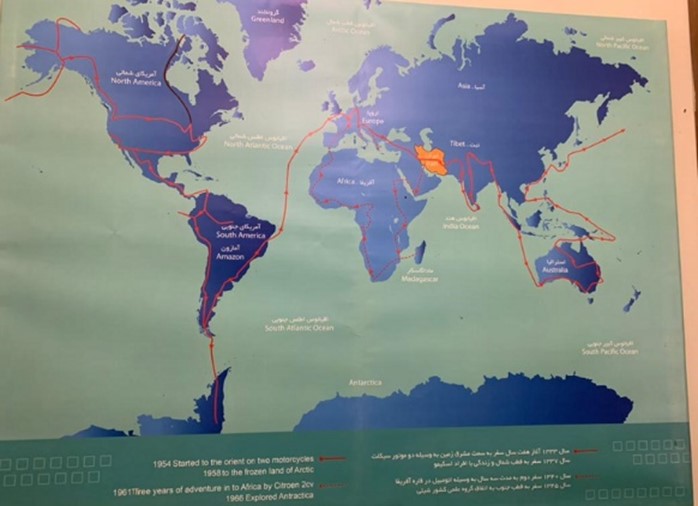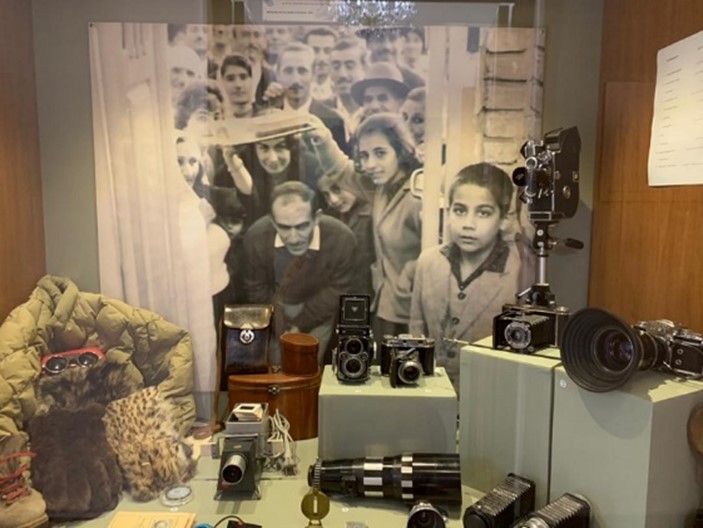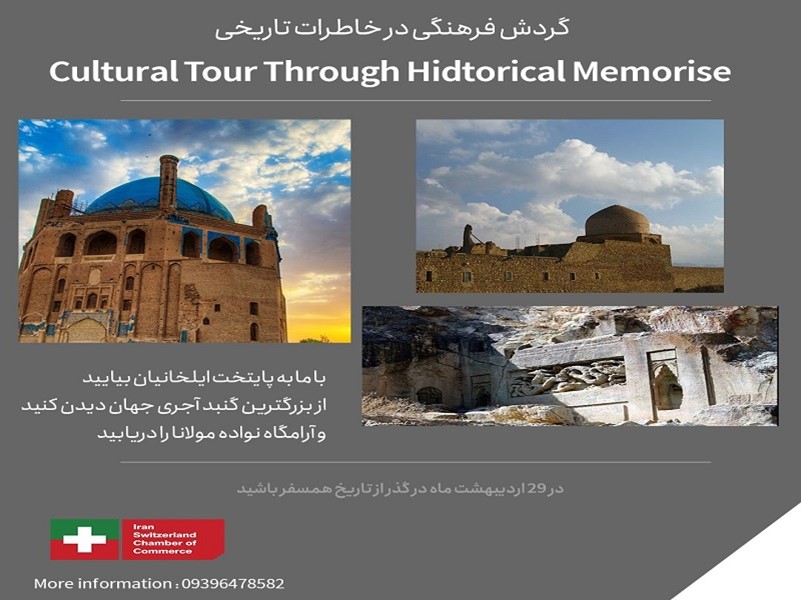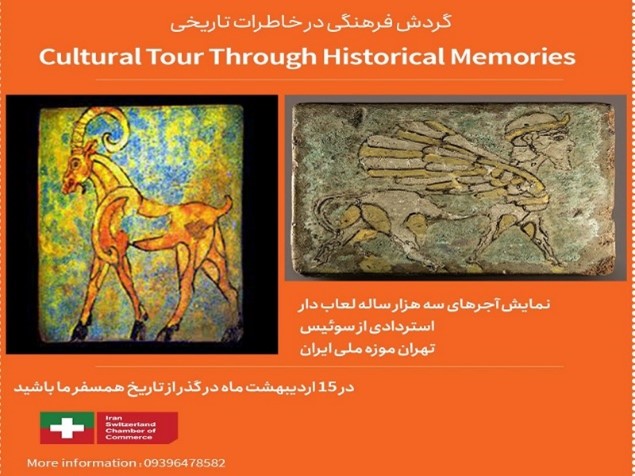
Repatriated Tiles from Switzerland
December 7, 2022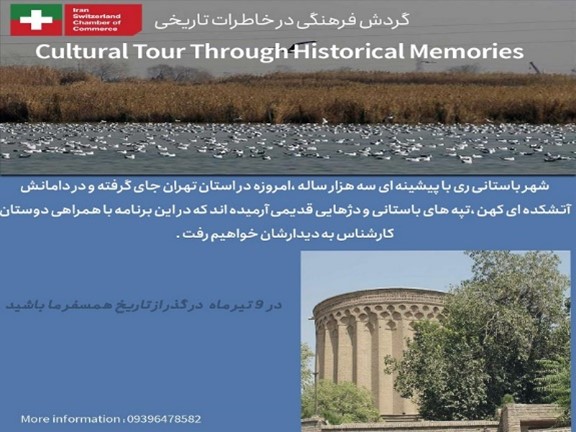
Shahre Rey
December 7, 2022
SAAD ABAD
Visit to the Cultural-historical Complex of Saadabad in Tehran
August 19th, 2022
Iran and Switzerland Chamber of Commerce, in line with its cultural activities in the field of tourism, this time has visited the historical complex of SaadAbad and a selection of its historical palaces. The cultural-historical complex of Saadabad is a 110-hectare complex in the north of Tehran, which was founded and expanded by the order of the Qajar and Pahlavi kings. This historical complex has several hectares of natural forest, along with several palaces, mansions, museums and various buildings, aqueducts, gardens, greenhouses and streets. This complex was built in Shemiran area, near Darband and on the slopes of Alborz Mountain range. In this city trip, we visited five unique palaces in this historical-cultural complex: the Green Palace, the Mellat Palace, the Museum of Omidvar Brothers, the Museum of Dishes, and the Farshchian Museum.
Saad Abad Podcast:
Saadabad is the name of a 110-hectare complex in the north of Tehran, which was founded and expanded by order of the Qajar and Pahlavi kings.
This historical complex has several hectares of natural forest, along with several palaces, mansions, museums and various buildings, aqueducts, gardens, greenhouses and streets. This complex was built in Shemiran area, near Darband and on the slopes of Alborz Mountain range, here we will visit and review five unique palaces in this historical-cultural complex.
Green Palace
Shahvand Palace or Green Palace, which is also known as Reza Shah Pahlavi Palace, is located on a high point, in the northwest of Saad Abad complex. In the beginning, this palace was a half-finished building whose owner was named Ali Khan. Reza Shah, after buying the building from Ali Khan, built the current palace and the construction and completion of this palace lasted from the time of Reza Khan's ministry to the early years of his reign (1301 to 1307 AD).
This palace was built in two floors (basement and ground floor) after seven years with the efforts of Iranian artists and architects. Reza Shah used the ground floor as his living and office and the basement as a warehouse. Also, a luxurious dining hall with decorated and carved tables and chairs, as well as exquisite porcelain, ceramic and Italian silverware was used for ceremonial reception of guests.
White Palace (Mellat Museum, Mohammad Reza Shah Pahlavi Palace)
This palace is the largest palace in the Saadabad Palace complex, which is known as the White Palace because of its white facade. This building, in addition to being dedicated to the administrative and ceremonial affairs of the Pahlavi era, was considered the summer residence of Mohammad Reza Shah and his wife Farah Pahlavi. This palace includes 54 different units, including 10 ceremonial halls, the largest of which is the palace hall, which has a dining room with an area of 220 square meters. The building of the palace, by order of Reza Shah, was started in 1310 and finished in 1315.
The Omidvar Brothers Museum (Ghajari Carriage House)
The Omidvar Brothers Museum is located in the northwest of the Saadabad complex, and its building belongs to the Qajar era. This treasure contains 4 rooms with a red brick facade and beautiful plasterwork, which was the carriage house and resting place of carriage-drivers. This building was renovated in 1381 and opened in October 1382, during the tourism week, named after the first contemporary Iranians tourists.
Royal Dishes Museum (Dishes Museum, Ashraf Pahlavi Palace)
The museum of dishes is located in the east of Saadabad cultural-historical complex. This building with an area of 2,600 square meters was designed by the order of Reza Shah, by engineer Abdul Aziz Farmanfarmaian, with a substructure of 1,800 square meters and built on two floors between 1315-18. The exterior of the building was made of Ax stone, which was renovated and expanded in 1350 by the order of Ashraf Pahlavi, and then the facade was covered with white marble. After the Islamic revolution, this building was introduced as a treasure of containers in 1992 and was handed over to the presidential institution at the end of 1999. In 2004, it was again provided to the Cultural Heritage and Tourism Organization. After the objects of the Handicrafts Museum were transferred to the above building in January 2005, this place was assigned to the Handicrafts Treasure.
Farshchian Museum (Palace of Queen Esmat Dowlatshahi, wife of Reza Shah Pahlavi)
This museum, which is located in the central part of the Saadabad complex, belongs to the Qajar period. In the past, the museum building was the residence of Reza Shah and his fourth wife, Queen Esmat Dowlatshahi, who lived there during the era of Mohammad Reza Pahlavi, the Shah's brother and then his special chef, and later it was turned into a warehouse.
This building, after renovation and restoration, was opened in October 1380 under the title of Ostad Farshchian Miniature Museum, which includes 5 halls and more than 70 works of the mentioned artist.




